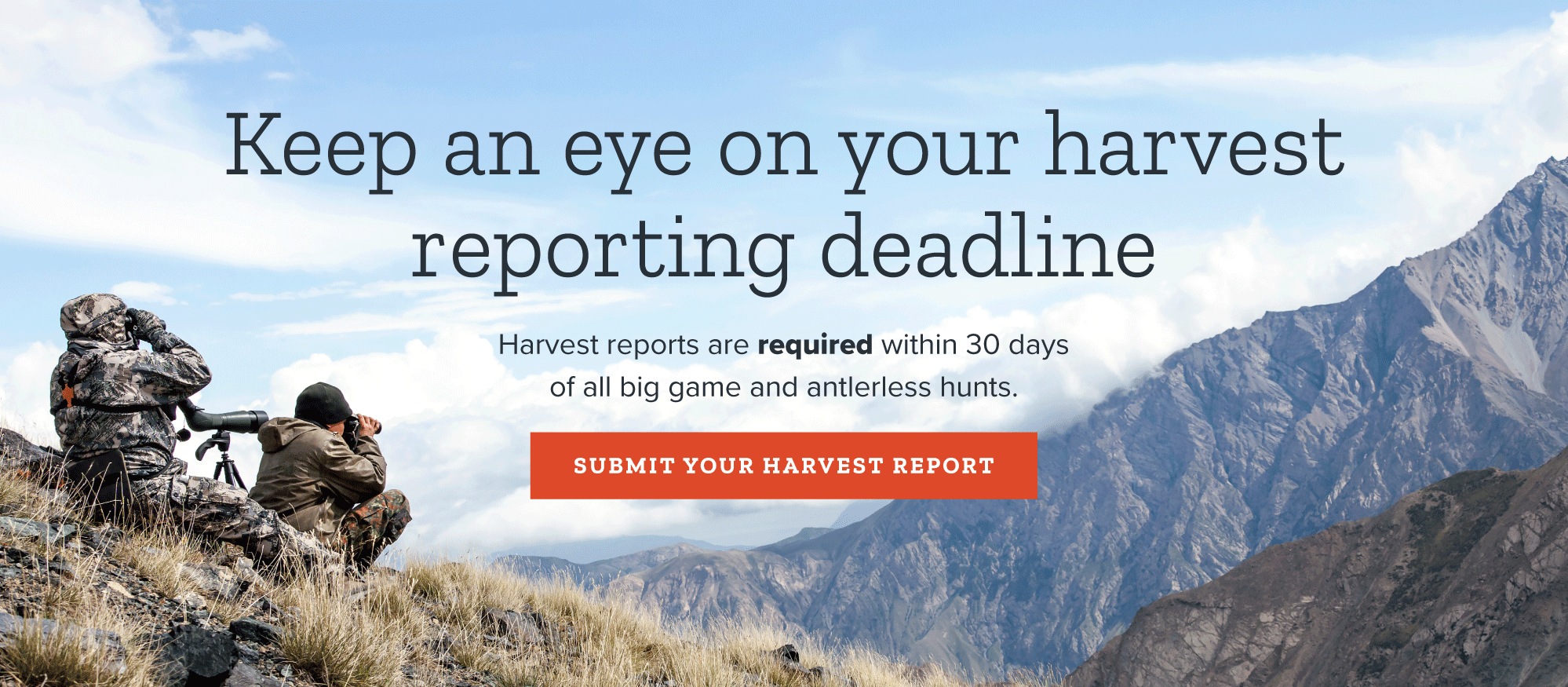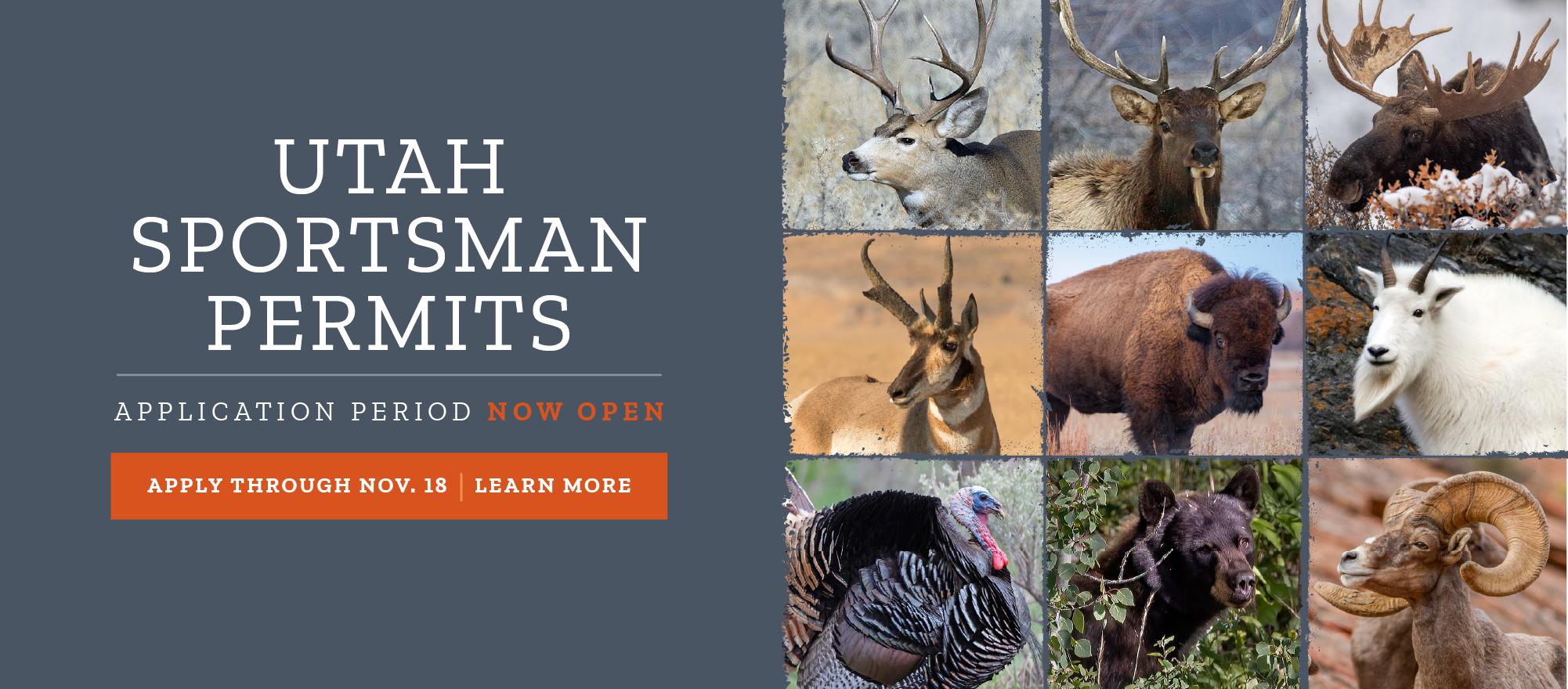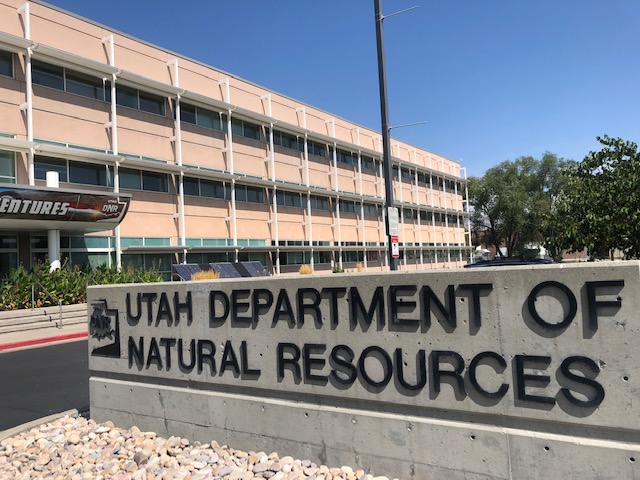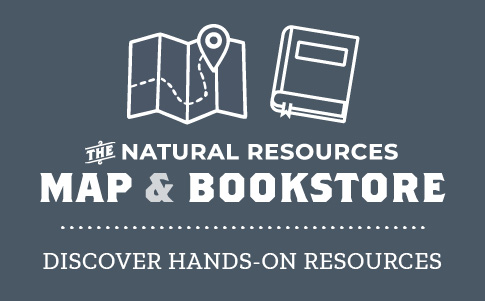Fiscal Year 2021 financial information
The DWR's main revenue source is from license and permit sales.
The Utah DWR has several funding sources that are used to support its programs. Many of these programs support wildlife species that are pursued by hunters and anglers, while others support non-game species. Certain programs, such as habitat restoration and protection, directly support both game and non-game species.
Revenue types

Expenses by classification

Expenses by program

The Division of Wildlife Resources annual budget for fiscal year 2021 (July 1, 2020 to June 30, 2021) was $116,172,736. The DWR receives the following types of revenue:
Restricted funds: The majority of DWR's revenue is generated from the sale of hunting and fishing licenses and permits. These funds are restricted for exclusive use by DWR and cannot be transferred to other state agencies. One hundred percent of the license dollars collected stay within the DWR to carry out the division's mission to conserve and protect the wildlife of Utah. Funding overages or shortages are managed through an interest-bearing account maintained by the State Treasurer. Other types of funding in this category are revenues from Certificates of Registration (CORs), donations, wildlife license plates and miscellaneous fees.
Federal funds: Each year, the DWR receives federal funds for wildlife, sportfish and sensitive and endangered species. Federal funds for the wildlife and sport fish programs come from the U.S. Fish and Wildlife Service (USFWS). The DWR receives revenue allocated by the USFWS from federal excise taxes on hunting and shooting equipment and fishing equipment and motorboat fuel. Each state's allocation is based on the state's hunting and fishing license sales and land area. These funds are generally matched with state funds in the ratio of 75 percent federal to 25 percent state funds.
Federal funding for sensitive and endangered species is generally distributed through grant requests. The DWR has received between $200,000 and $13 million annually for research and habitat protection for sensitive and endangered species. Other federal agencies, including the Bureau of Reclamation, Forest Service, Bureau of Land Management and Department of Defense, award funds to accomplish their agency goals on a contract basis.
Dedicated funds: Certain operations, such as Hardware Ranch WMA, generate limited funds to be used only by the DWR. Contributions are also dedicated funds.
General funds: General funds (tax dollars) account for nine percent of the DWR's annual budget. These funds are used primarily for sensitive species, law enforcement, wildlife depredation and some fish hatchery programs. Because the legislature has indicated that the DWR should not use hunting or fishing license revenue to fund nongame species management, these funds help cover the costs of nongame management.
An annual work plan and budgeting process ensures that all funds are optimized. The DWR's fiscal responsibility is reflected in its performance in both state and federal audits.
Wildlife Habitat Account
The Wildlife Habitat Account was created by the Utah State Legislature during the general legislative session in 1995. This account provides dedicated funds to be used only for the enhancement, preservation, management, acquisition and protection of fish and wildlife habitat and for improving public access for fishing and hunting. The Wildlife Habitat Account generates about $2 million each year for projects.
Habitat Council spending

Habitat Council: Project proposals originate in the field. They are then reviewed and prioritized by regional management teams and then forwarded to the Habitat Council for review and recommendation. The DWR director authorizes projects and the money to do them. This council is comprised of four DWR representatives and four citizens who represent big game, waterfowl, upland game and sport fishing interests. All potential projects are brought to the Habitat Council for review. DWR habitat managers present these projects, but they can originate from another agency, a landowner or anyone Utah.
Investing in the future: From our perspective, this habitat program represents an enormous opportunity, a great responsibility and the best possible investment for the future.
The hunting and fishing public has always been willing to pay their way and has strongly supported programs designed to produce tangible results on the ground. Our commitment is to build on our successes and expand our efforts to the benefit of all wildlife habitat and citizen interests throughout the state.
Chart definitions & clarifications
Revenue categories
- General fund: State income tax dollars
- Restricted revenue: Generally, dollars collected from the sale of hunting and fishing licenses
- Federal funds: Most federal funds are generated and distributed from excise taxes placed on the sale of certain sporting goods, typically products associated with hunting and fishing
- Dedicated credits: Most of these funds are provided to the agency by donations or through cooperative projects with other organizations
Expense categories
- Personnel services: Costs of employees and benefits
- In-state and out-state travel: Costs for travel and lodging
- Current expense: Contains most day-to-day operating costs of doing business. (includes: motor vehicles, supplies, communication expenses, construction and maintenance equipment, etc.)
- Data processing: Costs for computer and network charges
- Capital outlay: Costs for major facilities or equipment purchases
- Other/pass through: Consists of contract efforts with other government agencies and universities
While the Division budget may seem large, it is rather small compared to many western states. This is due, in part, to revenue limitations that Utah has placed on itself by restricting the quantities of licenses, by restricting the numbers of non-resident licenses, and through efforts to keep the cost of hunting and fishing licenses at nominal levels.
For additional information on Division funding, please contact Sarah Scott, Utah Division of Wildlife Resources Financial Manager, at 801-538-4854 or email to This email address is being protected from spambots. You need JavaScript enabled to view it..



















